Hebrew: ולריינה איטלקית, Arabic: ناردين، أصابع الراعي
| Scientific name: | Valeriana dioscoridis Sm. | |
| Synonym name: | Valeriana italica Lam. | |
| Common name: | Italian Valerian | |
| Hebrew name: | ולריינה איטלקית | |
| Arabic name: | ناردين، أصابع الراعي | |
| Family: | Valerianaceae, ולריניים |
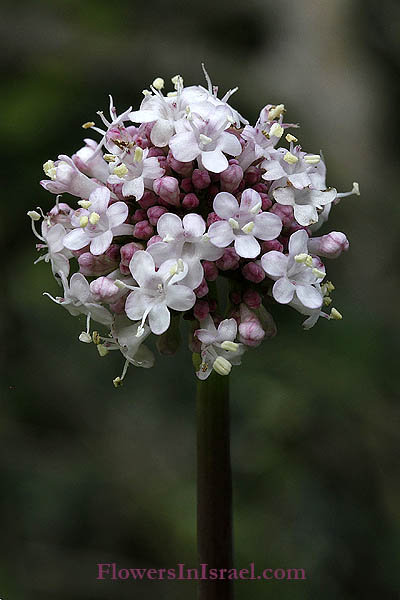
|
| Life form: | hemicryptophyte | |
| Stems: | 90-120 cm tall; round, grooving, hollow, and terminated with flowering branches, disposed crosswise | |
| Leaves: | The leaves are larger at the base of the stem, decreasing in size towards the summit; Opposite, rosette, compound, pinnate or bipinnate, pinnate, smooth margin | |
| Flowers: | small, in corymbs, odorous, and interspersed with lanceolate, connate, bearded, waved, pale bractes; the calyx is a slight margin at the top of the germen: the corolla tubular, white with a shade of pink, divided at the margin into five reflected, obtuse segments: the filaments are spreading with the corolla, and support round, yellowish, anthers: the style is shorter, with a trifid stigma | |
| Fruits / pods: | Homogeneous seeds-fruits; capsule with feathery pappus, purplish at the base; contains one oblong, ovate, compressed seed | |
| Flowering Period: | February, March, April | |
| Habitat: | Hard rock outcrops | |
| Distribution: | Mediterranean Woodlands and Shrublands, Semi-steppe shrublands, Montane vegetation of Mt. Hermon | |
| Chorotype: | Mediterranean | |
| Summer shedding: | Ephemeral |
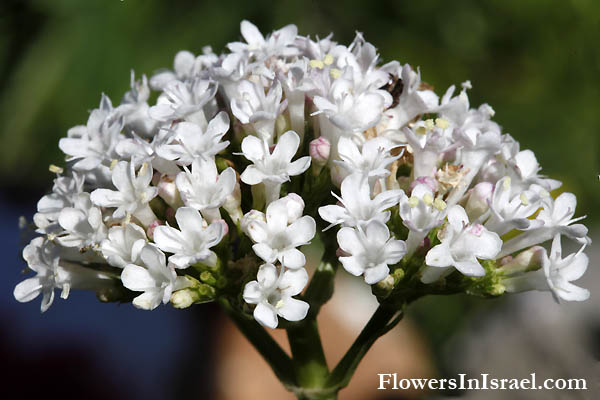
Derivation of the botanical name: Valeriana, possibly from Latin valere, to be strong, or from Valerius, a Roman family name, or from Valerus, the name of a Roman king. dioscoridis, to commemmorate Pedanius Dioscorides (Greek: Πεδάνιος Διοσκορίδης; ca. 40 - ca. 90), an ancient Greek physician, pharmacologist and botanist from Anazarbus, Cilicia, Asia Minor. italica, Italian. The Hebrew name: ולריינה, valeriana, transliteration from the European language.
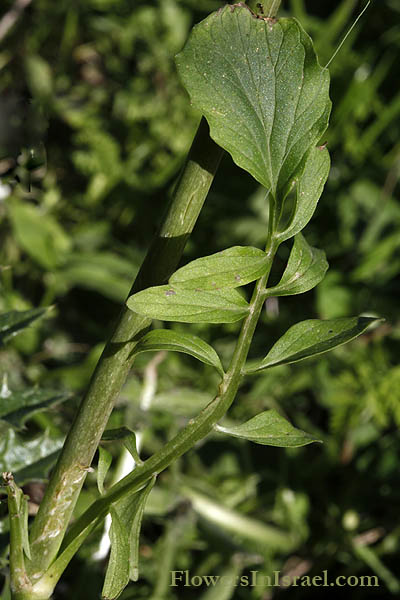
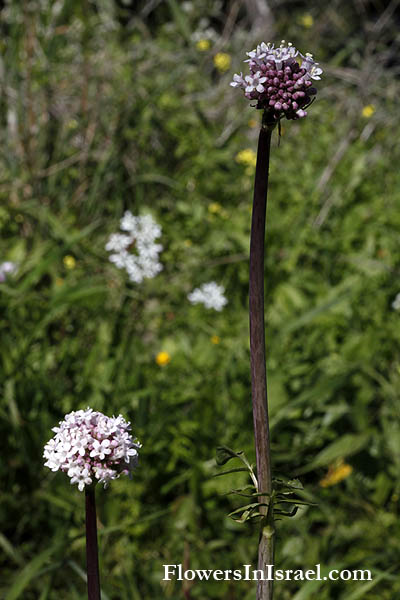
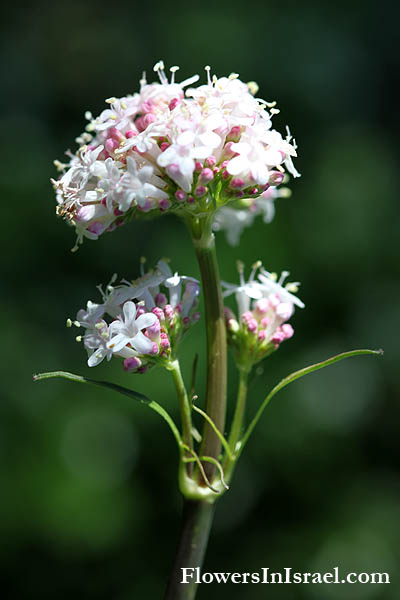
|